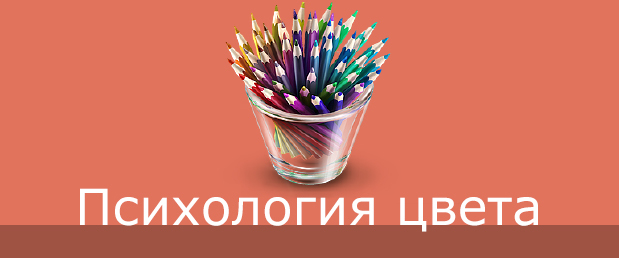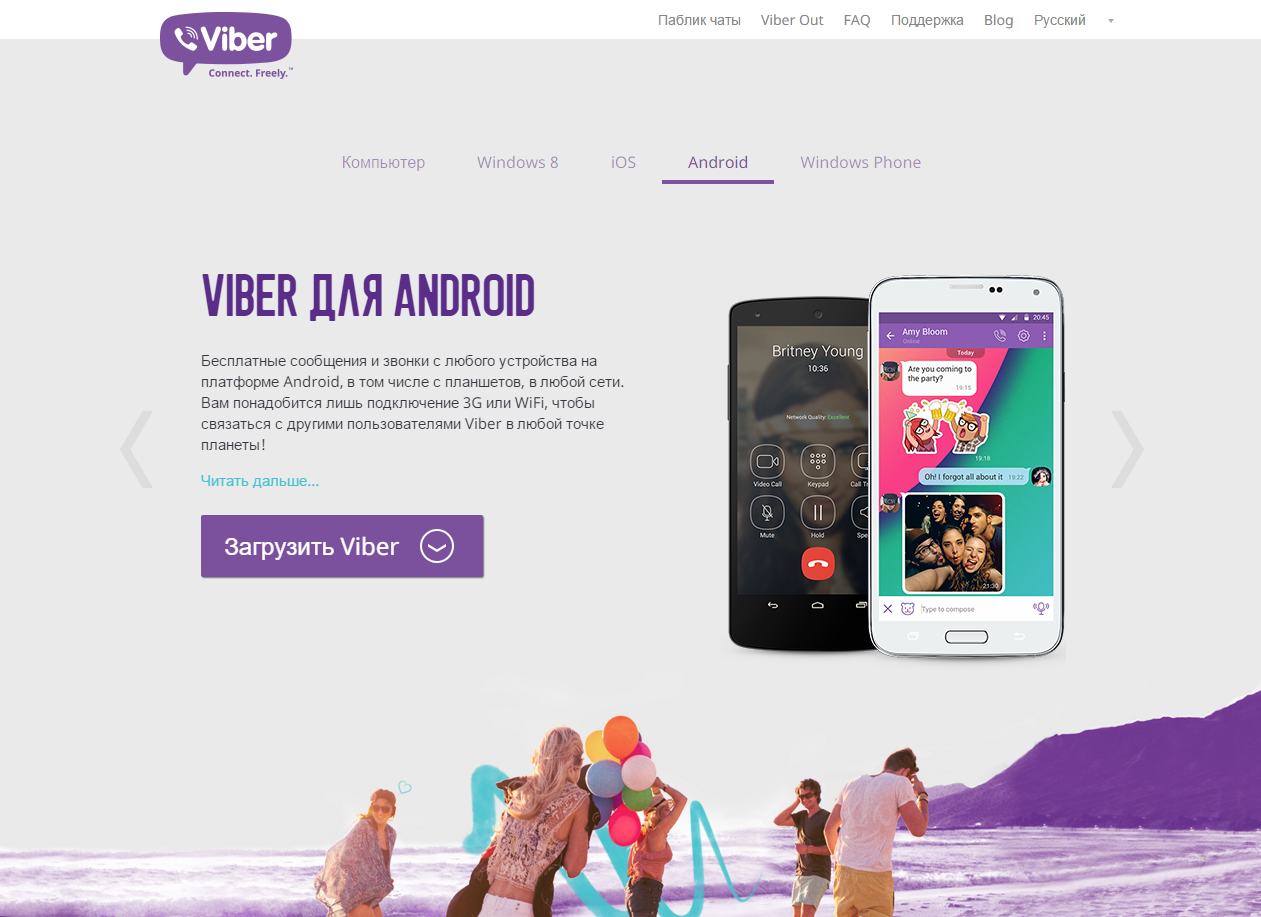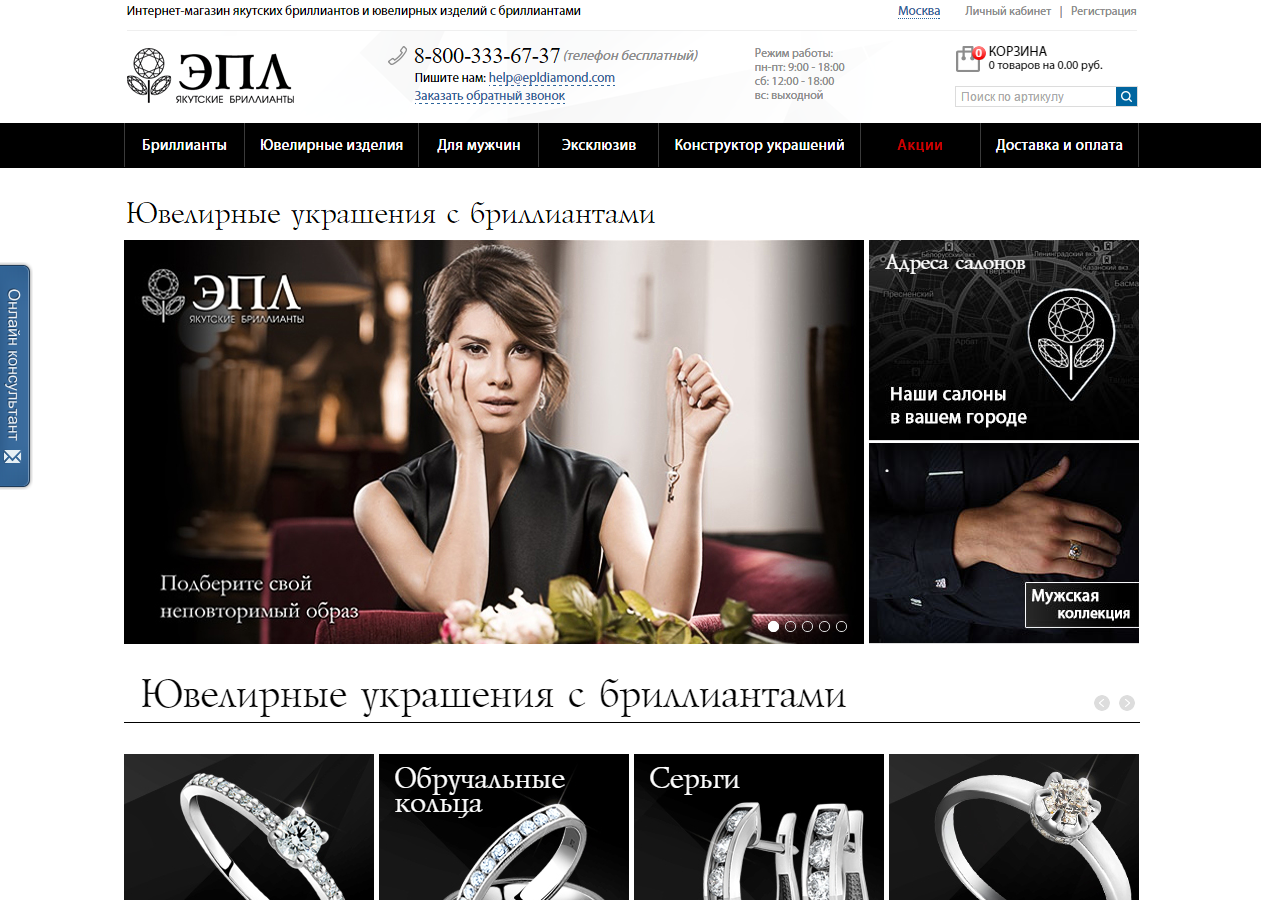How the color of your site affects the client’s mind
Color Theory states that each color has its effect on the human psyche. How to choose the right color for the site and what a “color wheel” is in the translation of an article from a graduate of the University of California Nick Rojas.
Have you ever noticed that fast food companies use one palette? Red and yellow shades prevail, few brands that do not use these colors replace them with orange, pink and other warm, bright colors. All because they follow Color Theory. It says that some colors have the ability to evoke certain feelings , emotions, or behavior. If you know these hidden properties, you can use them on your website to achieve the desired result, as fast food companies do.

')
It turns out that the red color acts as a stimulant (causing appetite, arousing hunger) and attracts attention, while yellow creates a sense of speed and urgency. Classic examples are McDonalds, KFC, Stardog! S. Now think about your own website and its design. Most likely, in the process of creating it, the colors were chosen without taking into account the Theory of Color, dispensing with the familiar colors of your brand.
Acquainted with this theory, you can analyze what feelings visitors experience on your site, and make the psychology of color work for you.
An interesting fact that few people know about - artists have been using Color Theory for hundreds of years. But the story of its use in business and marketing is much shorter.
One of the first modern interpretations of the Theory of Color was written about a hundred years ago by Albert Munsell. Mansell invented a three-component model for describing the color properties, in which color is detected using three concepts - value / value (English value), hue (English hue) and saturation / brightness (English croma).
In the past few decades, the use of Color Theory has come to internet marketing. Web designers had to work hard to describe an understanding of how the human brain perceives colors in a digital context.
Currently, Color Theory is becoming increasingly relevant in the field of Internet marketing due to the growing importance of the indicator of failures and other interaction statistics. When a visitor decides in a split second whether to trust a site or not, any small thing is important. And the application of the Theory of Color in practice in this case can have a decisive impact on the consciousness of the visitor, forcing him to remain on the page.
When creating websites, designers use Color Theory to improve the aesthetics, readability of pages, and, more importantly, to obtain the necessary psychological impact. Instead of using colors that just look good, you can base your design on getting a real effect - using the experience of studying the effects of color on our thinking. Based on the Color Theory, you can achieve maximum user engagement and minimize the likelihood that they will not be interested.
It is tempting to use minimalistic design when designing a website. Modesty attracts, because you can choose what the user will pay his attention in the first place - highlighting the necessary content in the right places on the page. But playing with color combinations you get one of the easiest ways to distinguish your site from the common "gray" Internet.
The use of contrasting colors will help in this, and your site will seem to users fresh and interesting. Our brain naturally interprets contrasting colors as a clear and bold design, which makes landing pages seem more attractive.
How to find complementary but contrasting colors? Use the color wheel. The color wheel is a proven tool that is used to show the relationship between primary, secondary and tertiary colors. But you should not choose colors that are opposite each other on the color wheel - you get too aggressive contrast. There are many variations of this tool on the Internet that will help you choose bright, contrasting, but compatible colors.
We turn to the most important in this article - the main tenets of the Theory of Color. All the colors of the spectrum are uniquely beautiful, but each of them in its own way influences the human mood and emotions.
Take a break from the business and think about the colors you use, look at your site and imagine - what feelings do you want to cause the user?
Red
Red - intuitive, color of physical strength. The color of blood. When you look at red, your pulse quickens, you have a sense of urgency; color gives courage, strength and awakens rebellious spirit - this is one of the most powerful colors. The online consultant RedHelper website is a great example of using red in the design and placement of accents.

Orange
OBI building hypermarket perfectly shows how orange symbolizes the phrase “order here and now!”. The OBI site is a good example of using contrasting colors in website design. Orange is another aggressive color that symbolizes a call to action, although it seems more carefree, warmer and safer than red. It is very good in combination with blue.

Yellow
Yellow is the color of youth. It symbolizes optimism and playfulness, creative impulses and spontaneity. Yellow is a bold color. He is not aggressive, but very noticeable. A great example is the site of the Nikon office in Russia.

Green
Green is associated with money (for obvious reasons), but this is not the most important thing. Green is rather a soothing, natural color, able to associate your site with a sense of security and calm. Green is an excellent choice if you want to instill a sense of trust in your visitors.
The Subway eatery network shows how color can be used to complement brand value. In this case, corporate colors are associated with freshness.

Blue
Blue is the color of sincerity. The color of water and sky, as well as - the main color of the Internet (remember, what is the default color of the link). For this reason, its uniqueness in online business is not as great as that of other colors. In this color to a minimum of impulsiveness and spontaneity, it is associated with logic and coolness. A good example is the wholesale purchase website METRO Cash & Carry .

Violet
In some ways, violet works like a combination of blue and green, giving your page a sense of security and safety. This color carries a slight touch of mysticism, but at the same time it broadcasts the honest intentions of the developer.
Viber messenger site perfectly demonstrates how violet causes a feeling of simplicity and honesty.

Pink
Romantic, feminine color. Pink gives a strong effect when used correctly, although it can repel certain groups of people. Because of their gender associations, pink should be used carefully, as in the wrong context it will cause a feeling of immaturity, or hints at intimate or informal relationships. It is unlikely that you will find at least one sports site, in the design of which is used pink. But for Baskin Robbins ice cream cafe - just right.

The black
First-class, sophisticated color, the color of luxury. It testifies to professionalism, taste, makes you feel all the sophistication of the offer. It is considered as a male analogue of pink, and may slightly alienate a female audience. An eloquent example is the online store of Yakut diamonds EPL .

All the text above fits into a simple idea - the right combination of colors on the landing pages has a big impact on the failure rate and conversion.
Using the basic rules of the Theory of Colors in the design of the site will help you increase its attractiveness to visitors. In an area where from success to failure separates a few seconds, using a competent color management strategy, you can increase the conversion many times over. Color solutions are one of the most underrated ways to influence the attractiveness of your site in the eyes of visitors. Color Theory will help you understand what users experience when they first look at your site. Pay attention to him, by the way. What do your company colors mean?
Have you ever noticed that fast food companies use one palette? Red and yellow shades prevail, few brands that do not use these colors replace them with orange, pink and other warm, bright colors. All because they follow Color Theory. It says that some colors have the ability to evoke certain feelings , emotions, or behavior. If you know these hidden properties, you can use them on your website to achieve the desired result, as fast food companies do.

')
It turns out that the red color acts as a stimulant (causing appetite, arousing hunger) and attracts attention, while yellow creates a sense of speed and urgency. Classic examples are McDonalds, KFC, Stardog! S. Now think about your own website and its design. Most likely, in the process of creating it, the colors were chosen without taking into account the Theory of Color, dispensing with the familiar colors of your brand.
Acquainted with this theory, you can analyze what feelings visitors experience on your site, and make the psychology of color work for you.
What is Color Theory?
An interesting fact that few people know about - artists have been using Color Theory for hundreds of years. But the story of its use in business and marketing is much shorter.
One of the first modern interpretations of the Theory of Color was written about a hundred years ago by Albert Munsell. Mansell invented a three-component model for describing the color properties, in which color is detected using three concepts - value / value (English value), hue (English hue) and saturation / brightness (English croma).
In the past few decades, the use of Color Theory has come to internet marketing. Web designers had to work hard to describe an understanding of how the human brain perceives colors in a digital context.
Why use Color Theory on your sites?
Currently, Color Theory is becoming increasingly relevant in the field of Internet marketing due to the growing importance of the indicator of failures and other interaction statistics. When a visitor decides in a split second whether to trust a site or not, any small thing is important. And the application of the Theory of Color in practice in this case can have a decisive impact on the consciousness of the visitor, forcing him to remain on the page.
When creating websites, designers use Color Theory to improve the aesthetics, readability of pages, and, more importantly, to obtain the necessary psychological impact. Instead of using colors that just look good, you can base your design on getting a real effect - using the experience of studying the effects of color on our thinking. Based on the Color Theory, you can achieve maximum user engagement and minimize the likelihood that they will not be interested.
How to choose colors for the site
It is tempting to use minimalistic design when designing a website. Modesty attracts, because you can choose what the user will pay his attention in the first place - highlighting the necessary content in the right places on the page. But playing with color combinations you get one of the easiest ways to distinguish your site from the common "gray" Internet.
The use of contrasting colors will help in this, and your site will seem to users fresh and interesting. Our brain naturally interprets contrasting colors as a clear and bold design, which makes landing pages seem more attractive.
How to find complementary but contrasting colors? Use the color wheel. The color wheel is a proven tool that is used to show the relationship between primary, secondary and tertiary colors. But you should not choose colors that are opposite each other on the color wheel - you get too aggressive contrast. There are many variations of this tool on the Internet that will help you choose bright, contrasting, but compatible colors.
Color psychology
We turn to the most important in this article - the main tenets of the Theory of Color. All the colors of the spectrum are uniquely beautiful, but each of them in its own way influences the human mood and emotions.
Mood and Emotions
Take a break from the business and think about the colors you use, look at your site and imagine - what feelings do you want to cause the user?
Red
Red - intuitive, color of physical strength. The color of blood. When you look at red, your pulse quickens, you have a sense of urgency; color gives courage, strength and awakens rebellious spirit - this is one of the most powerful colors. The online consultant RedHelper website is a great example of using red in the design and placement of accents.

Orange
OBI building hypermarket perfectly shows how orange symbolizes the phrase “order here and now!”. The OBI site is a good example of using contrasting colors in website design. Orange is another aggressive color that symbolizes a call to action, although it seems more carefree, warmer and safer than red. It is very good in combination with blue.

Yellow
Yellow is the color of youth. It symbolizes optimism and playfulness, creative impulses and spontaneity. Yellow is a bold color. He is not aggressive, but very noticeable. A great example is the site of the Nikon office in Russia.

Green
Green is associated with money (for obvious reasons), but this is not the most important thing. Green is rather a soothing, natural color, able to associate your site with a sense of security and calm. Green is an excellent choice if you want to instill a sense of trust in your visitors.
The Subway eatery network shows how color can be used to complement brand value. In this case, corporate colors are associated with freshness.

Blue
Blue is the color of sincerity. The color of water and sky, as well as - the main color of the Internet (remember, what is the default color of the link). For this reason, its uniqueness in online business is not as great as that of other colors. In this color to a minimum of impulsiveness and spontaneity, it is associated with logic and coolness. A good example is the wholesale purchase website METRO Cash & Carry .

Violet
In some ways, violet works like a combination of blue and green, giving your page a sense of security and safety. This color carries a slight touch of mysticism, but at the same time it broadcasts the honest intentions of the developer.
Viber messenger site perfectly demonstrates how violet causes a feeling of simplicity and honesty.

Pink
Romantic, feminine color. Pink gives a strong effect when used correctly, although it can repel certain groups of people. Because of their gender associations, pink should be used carefully, as in the wrong context it will cause a feeling of immaturity, or hints at intimate or informal relationships. It is unlikely that you will find at least one sports site, in the design of which is used pink. But for Baskin Robbins ice cream cafe - just right.

The black
First-class, sophisticated color, the color of luxury. It testifies to professionalism, taste, makes you feel all the sophistication of the offer. It is considered as a male analogue of pink, and may slightly alienate a female audience. An eloquent example is the online store of Yakut diamonds EPL .

Color Theory in Website Design
All the text above fits into a simple idea - the right combination of colors on the landing pages has a big impact on the failure rate and conversion.
Using the basic rules of the Theory of Colors in the design of the site will help you increase its attractiveness to visitors. In an area where from success to failure separates a few seconds, using a competent color management strategy, you can increase the conversion many times over. Color solutions are one of the most underrated ways to influence the attractiveness of your site in the eyes of visitors. Color Theory will help you understand what users experience when they first look at your site. Pay attention to him, by the way. What do your company colors mean?
Source: https://habr.com/ru/post/298508/
All Articles